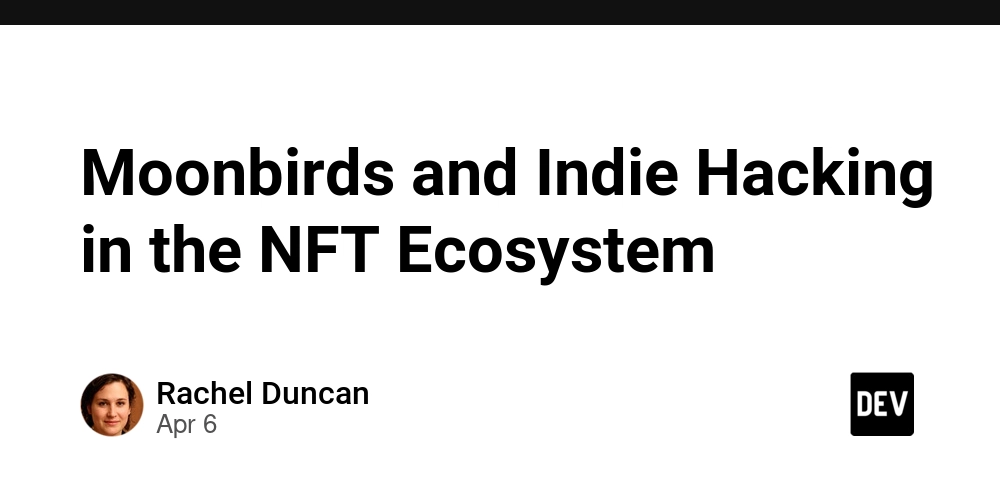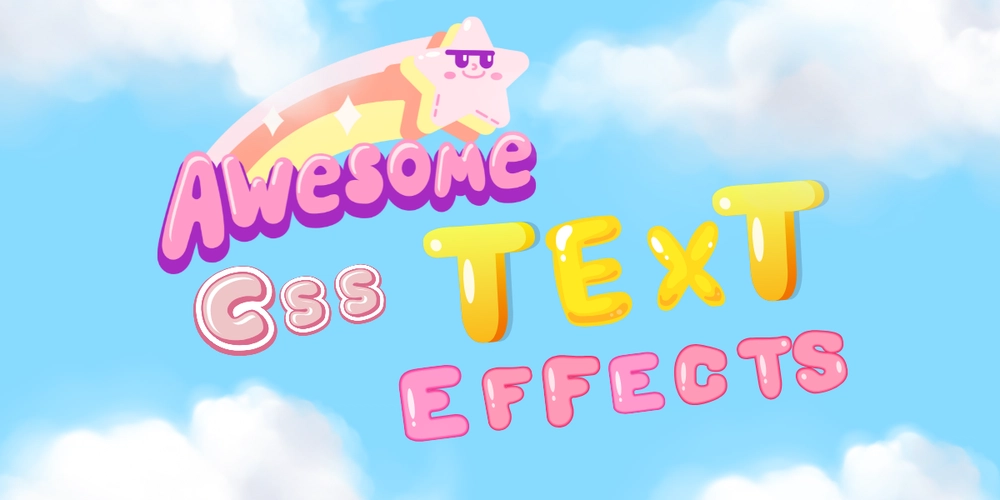Moonbirds and Indie Hacking in the NFT Ecosystem
Abstract: This post explores the innovative convergence of Moonbirds, a standout NFT project, and the growing indie hacking movement within the NFT ecosystem. We discuss the background of NFTs, the technical and community aspects behind Moonbirds, and key opportunities for developers. Detailed sections cover the core concepts and features, real-world applications, challenges, future trends, and include informative tables and lists. Anchored by useful links—such as Moonbirds, how to create an NFT, what is blockchain, NFT community building, NFT and education, and NFTs in gaming—this blog post serves as a technical yet accessible guide for indie hackers and enthusiasts eager to innovate in the decentralized digital world. Introduction The explosion of non-fungible tokens (NFTs) has transformed the art, technology, and creative communities over the past few years. Among the most prominent projects is Moonbirds, which has captured attention with its innovative blend of art, blockchain technology, and a thriving social community. Indie hackers—individual developers and small teams working on creative projects—are increasingly tapping into this ecosystem to build digital collectibles, platforms, and community tools, fostering decentralization and innovation. In this post, we discuss how projects like Moonbirds open up new opportunities for indie hackers. We share insights on NFT creation, platform development, community building, educational integration, and gamification. The technical discussion is supported by clear definitions, historical context, and practical use cases to provide a comprehensive view of the NFT ecosystem. Background and Context What Are NFTs and Moonbirds? NFTs are unique, blockchain-based digital assets that can represent art, collectibles, music, and more. Unlike cryptocurrencies that are fungible, NFTs have distinct values making them ideal for digital art and other unique items. Moonbirds is an NFT project that has become well-known for its blend of innovative artwork, technical utility, and robust community interaction. Projects such as Moonbirds highlight how blockchain technologies and artistic expression can work together to create vibrant digital ecosystems. The Indie Hacking Movement Indie hackers are entrepreneurs and developers who build their projects with limited resources and an emphasis on innovative coding practices. In the NFT realm, indie hackers explore: NFT Art Creation: Developing digital art that resonates with audiences. Platform Development: Building blockchain-based marketplaces and utility platforms. Community Tools: Designing tools that help foster collaboration and engagement. Educational Content: Explaining NFT concepts and processes in straightforward language. Gamification: Integrating augmented reality (AR) and interactive experiences into NFT projects. The opportunities that emerge from combining indie hacking with NFTs encourage a diverse range of projects—from branded merchandise and immersive virtual events to innovative applications in gaming. The Ecosystem Blockchain technology is the backbone of NFTs. Projects such as Moonbirds leverage open-source platforms and transparent protocols that allow anyone—with enough creativity and technical skill—to contribute and innovate. Understanding the underlying technology is key. For instance, exploring what is blockchain provides clear insights into how decentralization, immutability, and cryptography empower these digital assets. Core Concepts and Features In this section, we break down the essential areas for indie hackers working on NFT projects like Moonbirds. NFT Art Creation One core area includes creating unique NFT art or derivative works. Artists can connect with their audience directly by minting original digital artwork. This process is supported by guides on how to create an NFT, which detail the technical workflow from design to blockchain minting. Key Features: Unique Tokenization: Each asset has a unique identifier. Interoperability: Art can be traded or used across several platforms. Digital Provenance: The blockchain records the asset’s history. Platform and Community Development Developers have the opportunity to design platforms that are not only marketplaces but also offer custom tools for enhanced community engagement: NFT Community Building: Tools to provide insights, analytics, and on-chain data enable vibrant communities. Blockchain Technology Integration: Utilize open protocols for secure transactions and trust-building. Interactive Experiences: Augmented reality (AR) and gamified elements expand the utility of NFT projects. For instance, intentionally building community-focused platforms is supported by resources such as NFT community building. Education and Gamification A crucial aspect of decentralization is making these technologies understandable.

Abstract:
This post explores the innovative convergence of Moonbirds, a standout NFT project, and the growing indie hacking movement within the NFT ecosystem. We discuss the background of NFTs, the technical and community aspects behind Moonbirds, and key opportunities for developers. Detailed sections cover the core concepts and features, real-world applications, challenges, future trends, and include informative tables and lists. Anchored by useful links—such as Moonbirds, how to create an NFT, what is blockchain, NFT community building, NFT and education, and NFTs in gaming—this blog post serves as a technical yet accessible guide for indie hackers and enthusiasts eager to innovate in the decentralized digital world.
Introduction
The explosion of non-fungible tokens (NFTs) has transformed the art, technology, and creative communities over the past few years. Among the most prominent projects is Moonbirds, which has captured attention with its innovative blend of art, blockchain technology, and a thriving social community. Indie hackers—individual developers and small teams working on creative projects—are increasingly tapping into this ecosystem to build digital collectibles, platforms, and community tools, fostering decentralization and innovation.
In this post, we discuss how projects like Moonbirds open up new opportunities for indie hackers. We share insights on NFT creation, platform development, community building, educational integration, and gamification. The technical discussion is supported by clear definitions, historical context, and practical use cases to provide a comprehensive view of the NFT ecosystem.
Background and Context
What Are NFTs and Moonbirds?
NFTs are unique, blockchain-based digital assets that can represent art, collectibles, music, and more. Unlike cryptocurrencies that are fungible, NFTs have distinct values making them ideal for digital art and other unique items.
Moonbirds is an NFT project that has become well-known for its blend of innovative artwork, technical utility, and robust community interaction. Projects such as Moonbirds highlight how blockchain technologies and artistic expression can work together to create vibrant digital ecosystems.
The Indie Hacking Movement
Indie hackers are entrepreneurs and developers who build their projects with limited resources and an emphasis on innovative coding practices. In the NFT realm, indie hackers explore:
- NFT Art Creation: Developing digital art that resonates with audiences.
- Platform Development: Building blockchain-based marketplaces and utility platforms.
- Community Tools: Designing tools that help foster collaboration and engagement.
- Educational Content: Explaining NFT concepts and processes in straightforward language.
- Gamification: Integrating augmented reality (AR) and interactive experiences into NFT projects.
The opportunities that emerge from combining indie hacking with NFTs encourage a diverse range of projects—from branded merchandise and immersive virtual events to innovative applications in gaming.
The Ecosystem
Blockchain technology is the backbone of NFTs. Projects such as Moonbirds leverage open-source platforms and transparent protocols that allow anyone—with enough creativity and technical skill—to contribute and innovate.
Understanding the underlying technology is key. For instance, exploring what is blockchain provides clear insights into how decentralization, immutability, and cryptography empower these digital assets.
Core Concepts and Features
In this section, we break down the essential areas for indie hackers working on NFT projects like Moonbirds.
NFT Art Creation
One core area includes creating unique NFT art or derivative works. Artists can connect with their audience directly by minting original digital artwork. This process is supported by guides on how to create an NFT, which detail the technical workflow from design to blockchain minting.
Key Features:
- Unique Tokenization: Each asset has a unique identifier.
- Interoperability: Art can be traded or used across several platforms.
- Digital Provenance: The blockchain records the asset’s history.
Platform and Community Development
Developers have the opportunity to design platforms that are not only marketplaces but also offer custom tools for enhanced community engagement:
- NFT Community Building: Tools to provide insights, analytics, and on-chain data enable vibrant communities.
- Blockchain Technology Integration: Utilize open protocols for secure transactions and trust-building.
- Interactive Experiences: Augmented reality (AR) and gamified elements expand the utility of NFT projects.
For instance, intentionally building community-focused platforms is supported by resources such as NFT community building.
Education and Gamification
A crucial aspect of decentralization is making these technologies understandable. Educational content about NFTs fosters adoption:
- NFT and Education: Guides and tutorials help new users understand blockchain fundamentals and creative opportunities. See NFT and education.
Gamification takes these projects further by transforming NFTs into digital assets that interact with games or AR applications. Platforms like NFTs in gaming show real-world applications that bridge gaming, interactive experiences, and blockchain technology.
Table of Core Opportunities
Below is a table summarizing the key opportunities and their features in the Moonbirds ecosystem and indie hacking domain:
| Opportunity | Description | Example/Resource |
|---|---|---|
| NFT Art Creation | Create unique or derivative digital art with tokenization. | How to create an NFT |
| Platform Development | Build blockchain-based marketplaces and transaction platforms. | What is blockchain |
| Community Tools | Develop tools for analytics, user engagement, and community insights. | NFT community building |
| Educational Content | Produce accessible tutorials on NFTs to foster broader engagement. | NFT and education |
| Gamification | Integrate games, AR, and interactive digital experiences using NFT assets. | NFTs in gaming |
Applications and Use Cases
Real-world applications have already begun to transform the NFT landscape. Indie hackers can harness the potential of Moonbirds and NFT technology in several practical ways.
1. Branded Merchandise and Exclusive Events
- Branded Merchandise: Artists and developers can design Moonbirds-themed physical products. This blending of digital and physical merchandising boosts brand recognition and consumer engagement.
- Exclusive Events: Token-gated events—both virtual and physical—create a sense of exclusivity. These events are an opportunity for community members to connect, learn, and collaborate.
2. Augmented Reality (AR) and Interactive Experiences
- AR Integration: An indie hacker could build AR projects where Moonbirds come to life. Imagine viewing your NFT in augmented reality at home or in public spaces.
- Gamified Platforms: Developers might merge NFT assets with gaming environments to create novel play-to-earn models. These gamified experiences can attract non-traditional audiences into the NFT space.
3. Educational Platforms
- Tutorial Hubs and Resource Centers: Building comprehensive knowledge bases ensures that even newcomers can learn about NFT creation, blockchain fundamentals, and community practices. Content on platforms like NFT and education is invaluable.
- Developer Tools and APIs: Enterprise-grade APIs that allow real-time interaction with blockchain data are an emerging field. Indie hackers can develop open-source libraries for improved security and scalability.
Key Use Case Bullet List
- Develop a marketplace platform that integrates robust community tools for NFT collectors.
- Launch an AR mobile application that enables users to view and interact with their Moonbirds NFTs in real-life environments.
- Create a dedicated educational platform featuring video tutorials, interactive quizzes, and hands-on coding exercises focusing on NFT minting and blockchain basics.
Challenges and Limitations
While the NFT ecosystem holds immense promise, several challenges and limitations also exist. Addressing these is critical for indie hackers and entrepreneurs alike.
Legal and Intellectual Property Concerns
- IP Considerations: When creating derivative art or branded merchandise, legal and intellectual property issues can arise.
- Indie hackers must ensure compliance with existing copyright and licensing standards.
Market Volatility and Technical Complexities
- Market Fluctuations: The NFT market is noted for its volatility. Prices of digital assets may fluctuate widely, impacting revenue expectations.
- Technical Complexities: Blockchain scalability and security remain challenges. For example, maintaining low transaction fees and ensuring fast confirmation times require robust coding practices and advanced algorithms.
Trust and Decentralization Issues
- Building Trust: In a decentralized environment, ensuring transparency and preventing fraud are ongoing concerns.
- Interoperability: Projects built on different blockchains sometimes face integration issues, leading to fragmented user experiences.
Bullet List of Limitations
- Legal & IP Challenges: Risk of copyright infringement and disputes over derivative art.
- Market Volatility: Unpredictable fluctuations in NFT prices.
- Technical Complexities: Scalability, performance optimization, and blockchain integration issues.
- Trust Building: Decentralized trust can be challenging without strong reputation systems.
Future Outlook and Innovations
The future of NFT projects such as Moonbirds—and the indie hacking movement overall—looks bright but requires continued innovation.
Growing Ecosystem and Adoption
The NFT market is on an upward trend, and as more users become educated through dedicated platforms, adoption is likely to surge. The community is already demonstrating novel use cases ranging from digital art transformation to interactive gaming environments.
Advances in Blockchain Technology
The backbone technology continues to evolve. With emerging solutions in cross-chain interoperability and layer-two scalability, technical complexities are likely to diminish. Key developments in security (using smart contract audits and consensus mechanisms) are paving the way for more robust NFT platforms.
Innovations in Community and Gamification
In the coming years, expect integrations between NFTs and augmented reality to become more seamless, and gamified experiences will likely extend into new models (such as play-to-earn scenarios). Adding educational layers will enable even more indie hackers to enter the space with confidence.
External Perspectives from Dev.to
Several recent posts by blockchain and open-source enthusiasts provide compelling insights into the future:
- Financial Backing for Open Source Projects: A Path to Sustainability
- Unleashing the Power of Tokenization for Sustainable Open Source Innovation
- Unveiling a New Era in Open Source Licensing
- Unveiling the Legacy of XFree86 License
- Arbitrum and Gaming: A New Frontier in Blockchain Technology
These articles explore similar themes regarding open-source sustainability, tokenization, and decentralized innovations that complement the growing trend towards a more integrated and accessible NFT ecosystem.
Summary
In summary, Moonbirds represents not only an iconic NFT project but also a gateway to broader innovation for indie hackers in the blockchain space. By combining art, technology, and community, Moonbirds has set a precedent for what is possible when creative expression meets technical brilliance. This post has delved into:
- The Background and Relevance: An introduction to NFTs, Moonbirds, and the indie hacking movement.
- Core Concepts and Features: Detailed explanations of NFT art creation, blockchain platform development, community tools, and gamification.
- Real-World Applications: Case studies in branded merchandise, AR integration, and educational platforms.
- Challenges and Limitations: Legal, technical, and market factors that require careful navigation.
- Future Outlook: Opportunities for developing more secure, scalable, and engaging decentralized ecosystems.
The integration of structured data—such as tables and bullet lists—helps us visualize opportunities while the practical examples and external perspectives from leading dev communities shed light on the future of this dynamic landscape.
For indie hackers, the confluence of NFT technology and creative freedom represents a dynamic frontier. With resources like Moonbirds and Indie Hacking Opportunities and supportive educational materials, developers can confidently embark on projects that blend technical expertise with artistic ingenuity.
As blockchain and NFT technologies continue to evolve, the role of the indie hacker becomes increasingly significant. By maintaining clear communication, adhering to legal standards, and leveraging community-building strategies, innovators can build robust, scalable, and engaging ecosystems that redefine digital ownership and interactivity.
Embrace the journey—with the right blend of creativity, technical acumen, and resourcefulness, the future of NFTs and open-source innovation is bound to be as expansive and dynamic as the digital art it supports.
Happy hacking and tokenizing!











































































































































































![[The AI Show Episode 142]: ChatGPT’s New Image Generator, Studio Ghibli Craze and Backlash, Gemini 2.5, OpenAI Academy, 4o Updates, Vibe Marketing & xAI Acquires X](https://www.marketingaiinstitute.com/hubfs/ep%20142%20cover.png)




























































































































![[DEALS] The Premium Learn to Code Certification Bundle (97% off) & Other Deals Up To 98% Off – Offers End Soon!](https://www.javacodegeeks.com/wp-content/uploads/2012/12/jcg-logo.jpg)


![From drop-out to software architect with Jason Lengstorf [Podcast #167]](https://cdn.hashnode.com/res/hashnode/image/upload/v1743796461357/f3d19cd7-e6f5-4d7c-8bfc-eb974bc8da68.png?#)








































































































.png?#)

































_Christophe_Coat_Alamy.jpg?#)
 (1).webp?#)





































































































![Apple Considers Delaying Smart Home Hub Until 2026 [Gurman]](https://www.iclarified.com/images/news/96946/96946/96946-640.jpg)
![iPhone 17 Pro Won't Feature Two-Toned Back [Gurman]](https://www.iclarified.com/images/news/96944/96944/96944-640.jpg)
![Tariffs Threaten Apple's $999 iPhone Price Point in the U.S. [Gurman]](https://www.iclarified.com/images/news/96943/96943/96943-640.jpg)




































































































































